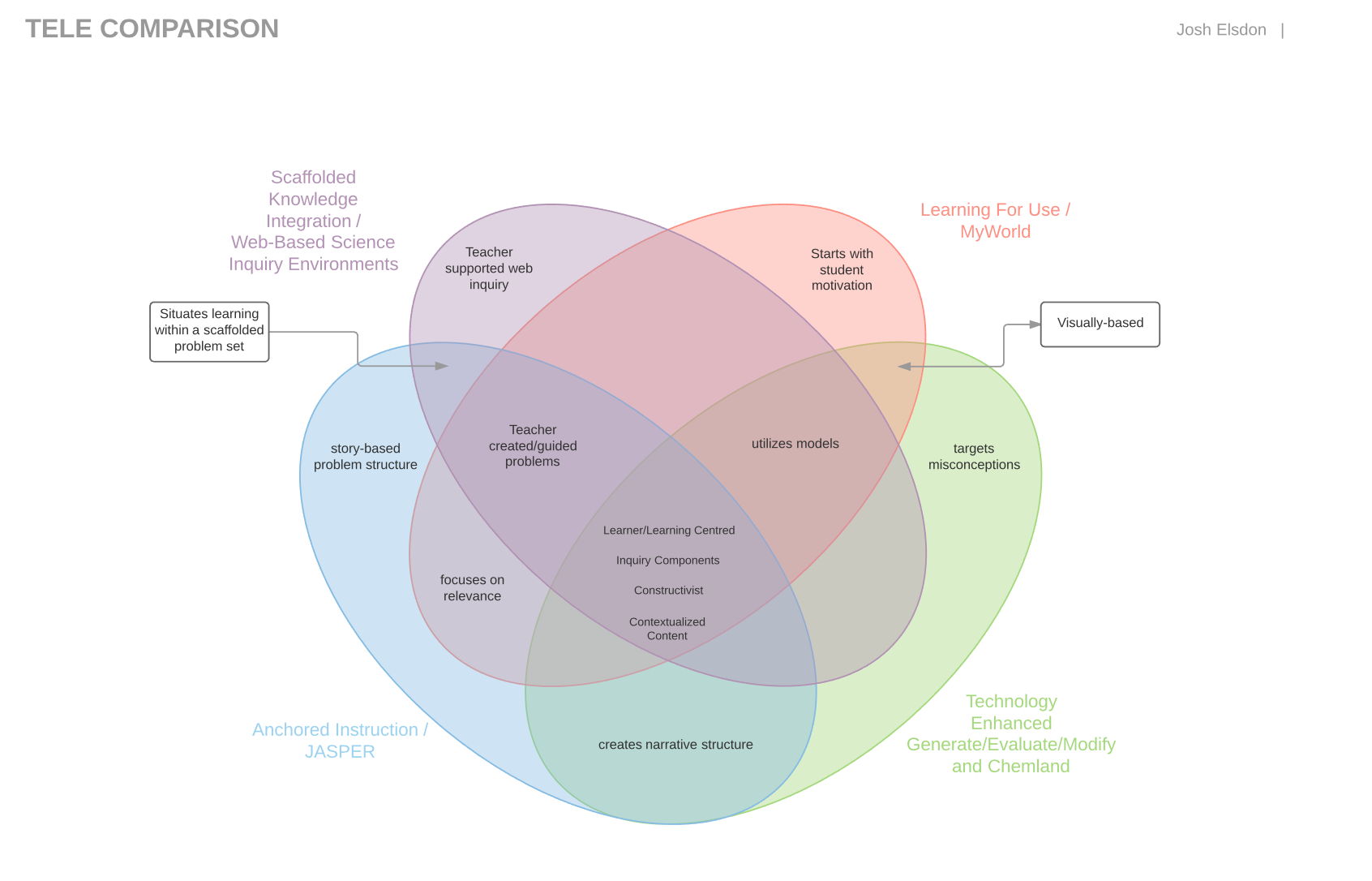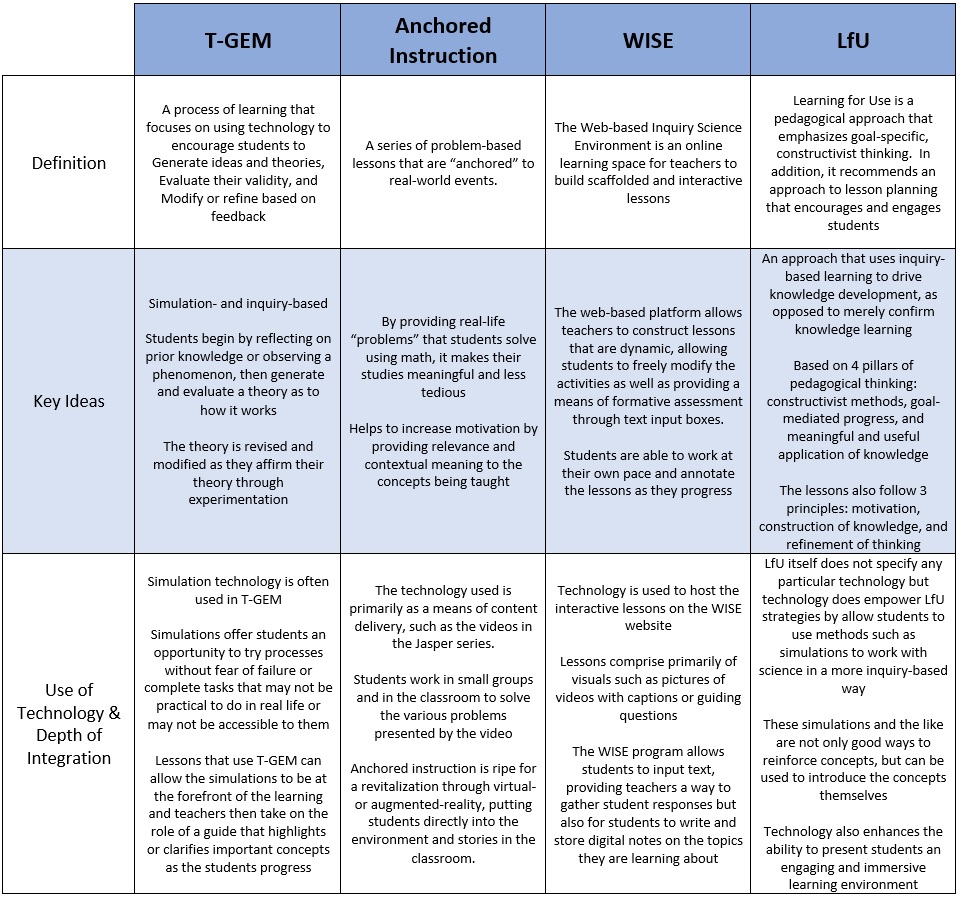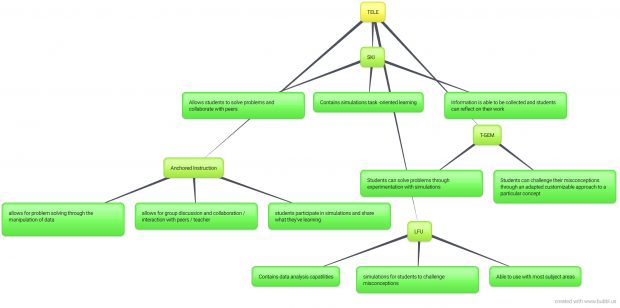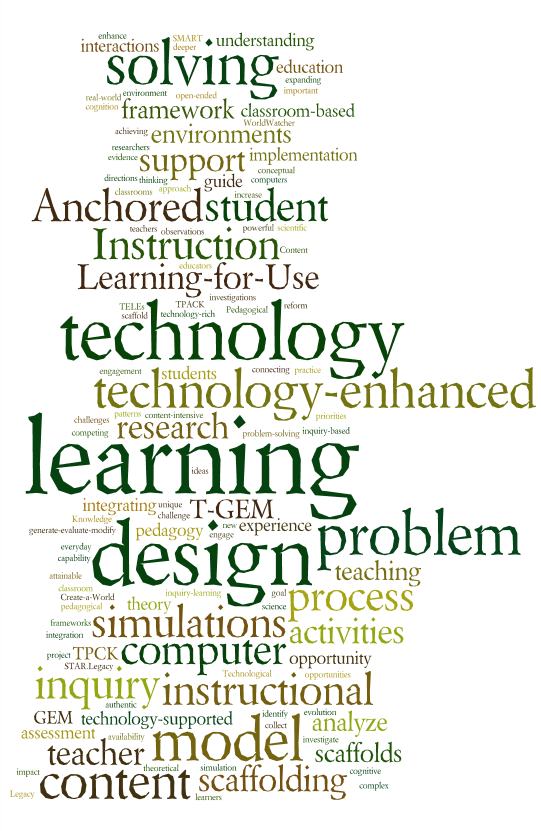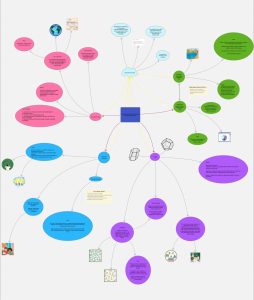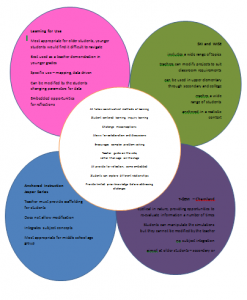| Basic Premise | Similarities | Differences | |
| T-GEM & Chemland | *Cyclical process of Generating, Evaluating, and Modifying hypotheses | *Emphasis on inquiry, with student building and creating their own understandings
*Technological tools to provide simulation opportunities not otherwise available *Moves away from more traditional rote instruction and memorization *Students work with specific goals in mind *Collaborative opportunities provided and often required for ultimate learning |
*Digital tool enables exploration of concept to generate hypotheses and synthesizes vast quantities of data
*Enables students to interact with concepts too small, rare, or dangerous to interact with otherwise in a school context |
| Anchored Instruction & Jasper | *Placing learning in authentic, rich contexts based on problem-solving | *Digital tool provides context for activity
*Context is not as immediately adaptable to other student interests or needs, but teachers can create their own designs based on the model on their own |
|
| SKI & WISE | *Connect to personal context of prior knowledge and relevant problems *Support learning with scaffolding | *Digital tool provides scaffolding opportunities in exploration
*Ongoing community of practice with expanding resources |
|
| LfU & MyWorld | *Integration of concepts with discipline-specific skills and processes | *Digital tool compiles data for students and expedites analysis process
*Enables students to interact with potentially immense land masses and complex patterns in a scale representation |
I find these four foundational technology enhanced learning environments and approaches to be similar in their core principles, but subtly different in their specific application and implementation. At the root of these TELEs is an emphasis on student-directed learning through inquiry and skill development. This is a movement away from a teacher-directed model of learning in which the students are the passive receivers of information. Through these models, the students are the creators and discoverers of knowledge, while the teacher steps into the role of the guide, supporter, and facilitator. This enables more personalized and individualized learning experiences. For example, students can create their own personal hypotheses through a T-Gem activity rather than being told what they should be looking for. They have the opportunity to test their own theories, which would also be similar to the LfU principle that students should use discipline-specific processes when working with concepts. The value of community is also a common thread, as students learn from their interactions with others online or face-to-face, and educators can connect as well through databases of projects and ideas. The ultimate goal is for students to engage in authentic and meaningful learning experiences that foster understanding, growth, and further learning.
The role of the technological tool itself can differ somewhat between the approaches. For example,in the Jasper video series, the videos are not customizable and provide the context for the problem solving. The story-based design engages interest and sets up the need for new learning, but the manipulation and experimentation occurs outside of the tool. In Chemland, the technology allows students to visualize and manipulate concepts that would not otherwise be observable in a classroom environment, but the goal of the technology use is to develop theories and experiment with them. Chemland is both the context and the exploration area for the learning.
Working with technology enhanced learning environments in this module has expanded my understanding of the options that are available to students and to teachers. My approach to learning through guided and independent inquiry and student-led learning was validated by the goals and approaches of the theories and programs we explored. These models, however, have provided me with more specific frameworks in which to design and situate learning experiences. I have also been able to envision new technology tools I can use in my senior mathematics classroom, as well as new ways I can apply the technologies I already use with my students. For example, when working with statistics, the authentic contexts provided by the scientific modeling programs can provide valuable and real experiences for my students to develop a better understanding of the actual meaning of what they are doing.
An important overall takeaway for teachers integrating technology is that while technology enhances learning experiences and environments in each of these approaches, it does not replace the personal relationships of learning. TELE is not about putting a student in front of a screen and walking away, but rather, it is about leveraging technology to provide students with better learning experiences that support their learning needs, while also engaging students in collaborative discourse. While the role of the teacher may change, it does not become diminished.
